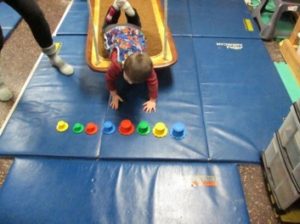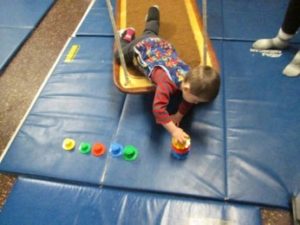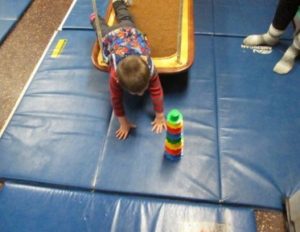Visual Motor Integration – the ability to bring visual perceptual abilities and motor control together in order to perform a motor task, is a vital skill needed for social, emotional, and academic independence. Typically, parents and teachers look to the emergence of hand function as a measure of development of this skill. Meanwhile, therapists look to the emergence of other key elements of visual motor integration such as:
- Core stability – the ability to hold the postural muscles of the trunk steady in anticipation of the movement to come
- Distal mobility – the ability to activate the more distant segments of the body (hands and feet, or fingers and toes) in a step-wise fashion in order to manipulate an object once the core has been stabilized
- Functional vision – the ability to take in and process visual information about:
- Where we are in space in relation to the object to be manipulated
- The position of the object in relation to the hand or foot that will be manipulating it
- Imagining or visualizing how the object will look after it has been moved





Comments are closed.